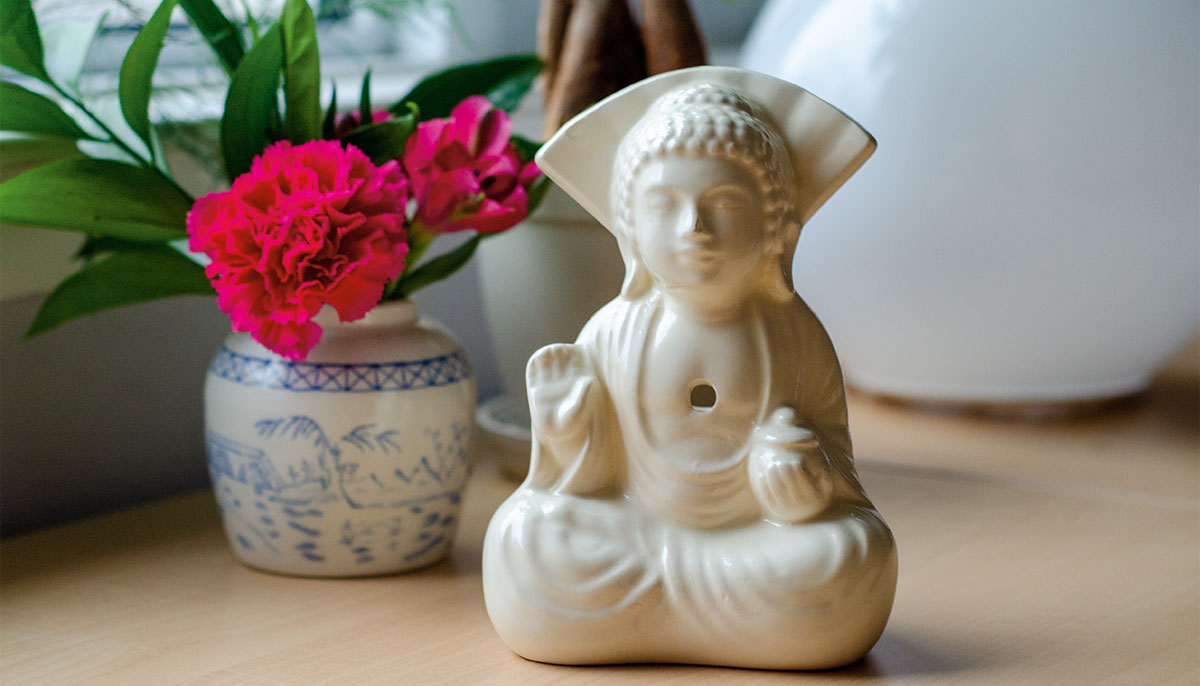When I was twelve, my friend Kim and I had dinner with our mothers at a teppanyaki restaurant. I thought it was so fancy. Not only did the chef flip a shrimp tail into his pocket, each cocktail on the menu came in a different glass, and if you ordered a cocktail, you got to take the glass home with you.
When our moms decided to get drinks, they said Kim and I could keep the glasses. Kim’s glass looked like a beautiful Japanese woman peeking out from behind a fan. My glass was not nearly as nice. It was shaped like some guy with a bun and weirdly long earlobes.
That buddha I got when I was kid now has a chipped nose, and of course he still has a hole in his chest for a straw. But, you know what? He inspires me on my path.
Still, I kept the glass on my bedroom dresser, jammed with dried roses and a flamingo feather. Because I never thought to ask who the guy was supposed to be, it took me years to learn he was the Buddha. And even then, I wasn’t at all clear what he had done that was so special.
Fast-forward to today, and I’m well familiar with many teachings attributed to the Buddha and with many stories about his life. Yet, I still don’t really know much about him. No one does.
He lived millennia ago. So, the Buddha, the human being who wandered northern India, is largely lost to the mists of time. But in myriad texts and in our popular understanding, he has so many aspects that are beloved.
People see the Buddha as the perfect teacher, imparting perfect wisdom, and a loving, caring friend to his disciples. He’s a miracle maker, walking immediately after birth, lotuses blooming from each of his steps. He’s a spiritual ideal—his enlightenment so manifest it can be seen in the mound on the top of his head. And in the modern world, often reflecting our own beliefs, the Buddha has even come to resemble a neuroscientist, a progressive activist, a spiritual-but-not-religious type, or an out-and-out atheist.
Personally, I don’t think it matters if all the aspects of his story are historically accurate, or if all the teachings attributed to the Buddha actually came from him. What matters is if they help us wake up. My view of the Buddha is that we shape him in our own hearts and minds. He is of us, the very best of us. Whoever we believe he is, he can point the way for us to be our wisest, most compassionate selves.
I hope that in this issue you will encounter a new-to-you side of the Buddha. Perhaps you’ll come across an anecdote or two about his life, which you were not previously familiar with, and it will inspire you in your own life and practice. Or maybe you’ll read a reframing of one of his foundational teachings, and suddenly the truth of it will crystallize for you in a new way.
That buddha I got when I was kid now has a chipped nose, and of course he still has a hole in his chest for a straw. But, you know what? He inspires me on my path. There’s equanimity and compassion in his ceramic smile—and a little humor.

